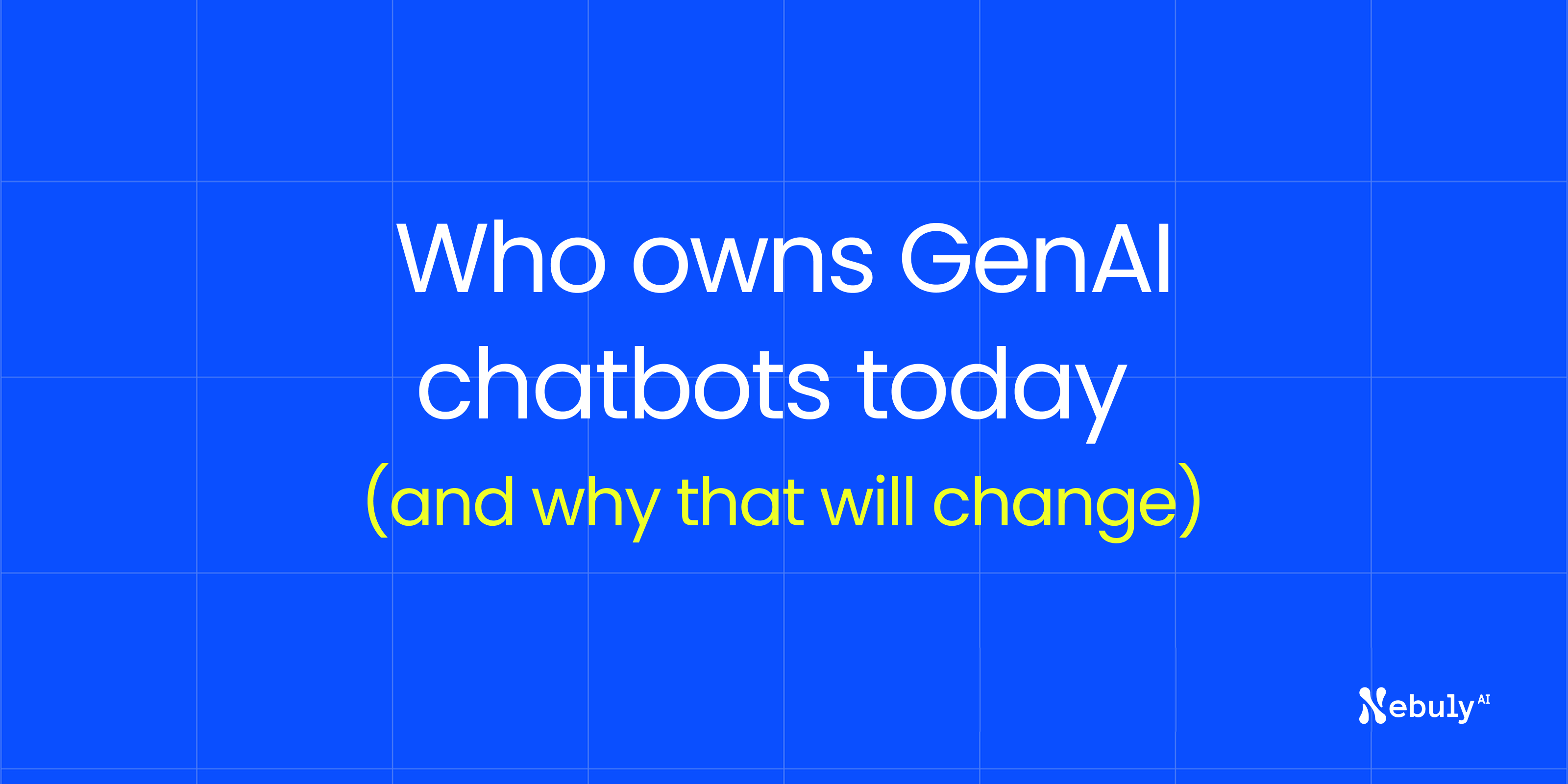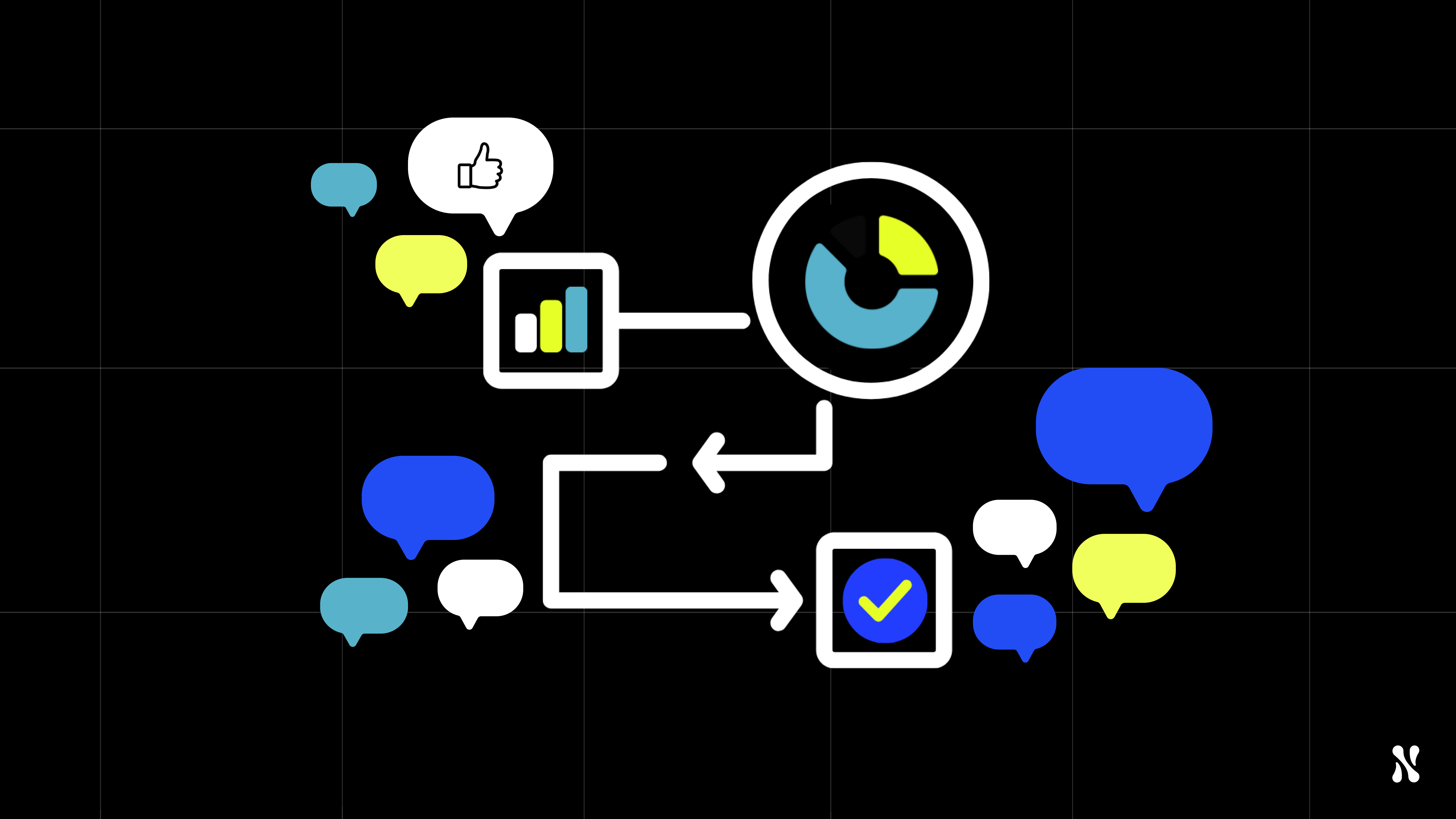Generative AI is no longer niche. In 2025, the global generative AI market is valued at around $50 billion, with ninety-two percent of Fortune 500 companies already using it. Sixty percent of organizations have a Chief AI Officer, and most are hiring more staff with generative AI skills. In 2024, private investment in AI in the US reached $109 billion.
Yet in most enterprises, chatbot ownership is concentrated in one place: the central AI or engineering team.
This blog explains why that model exists, why it will decentralize, and why measuring adoption and business value is the key to making the shift work.
From “Internet teams” to AI everywhere
When the internet first entered the enterprise, many companies had a dedicated “Internet team.” They built and ran the website, chose the technology stack, and decided what went online.
Over time, that model disappeared. The internet became part of every department’s daily work: marketing managed campaigns, sales built funnels, HR recruited online.
AI is following the same arc.
Today, AI teams own adoption, production, and the broader digital transformation effort. They choose models, manage integrations, and track performance.
But in the future, AI will be embedded in every department.
- Marketing will run AI-driven content engines.
- HR will have onboarding copilots.
- Operations will use conversational interfaces to manage processes.
- Sales will rely on AI for research and qualification.
The AI team will still provide governance and technical oversight. But ownership of experience, value, and improvement will shift to the departments that depend on the tool every day.
How chatbots are owned today
Centralized ownership emerged for three reasons:
- Specialist skills: Early deployments needed engineers and data scientists.
- Risk control: Enterprises wanted tight control over sensitive data.
- Experimental phase: Pilots needed to be small and contained.
Even now, AI-first organizations tend to rely on small, technical groups rather than cross-functional teams, even though blending technical and domain expertise delivers better outcomes.
Outside the enterprise, most powerful LLMs are still owned by private companies that control access and training data, which means businesses depend on a handful of external providers.
Why ownership will decentralize
Three forces will drive this shift, and each makes adoption tracking more critical.
Broad adoption across functions:
Seventy-eight percent of organizations in the US used AI in 2024, up from fifty-five percent a year earlier. Nearly all large companies are experimenting with generative AI. As marketing, customer support, and product teams integrate chatbots into their workflows, they will demand more control.
Why it matters: When ownership spreads, it becomes harder to see the full picture. Tracking usage and adoption patterns across departments is the only way to spot where AI is thriving and where it’s underused.
Falling costs and open-weight models
The cost of running a GPT-3.5-level model has dropped more than 280-fold since 2022, and open-weight models are now close in capability to closed systems. Many teams can fine-tune models with their own data or build custom applications on top of existing ones. AWS research shows 58 percent of organizations plan to build custom apps on pre-existing models and 55 percent will fine-tune models with proprietary data.
Why it matters: As each department shapes its own model or configuration, adoption data becomes the benchmark for comparing which approaches actually deliver value.
Organizational change
With more Chief AI Officers and dedicated generative AI hires, companies are creating structures that enable distributed ownership. Cross-functional teams, combining product managers, engineers, and subject-matter experts, can tailor assistants to their own needs and iterate quickly.
Why it matters: Fast iteration without shared adoption metrics risks duplicating mistakes. Behavioral analytics ensures lessons from one team can inform others.
The result will be AI embedded in every department, with the central AI team acting as platform steward rather than sole owner, and with adoption data as the common language for alignment.
From Model Metrics to Business Value
Technical observability is essential early on. Metrics like latency, error rates, and token usage show if the model is functioning. But once live, those metrics cannot tell you whether AI is actually helping people or driving outcomes.
That’s when organizations need to move up the “three-layer method” for measuring business value:
- Financial signals: The direct business outcomes AI influences. This could be new revenue, reduced support costs, or productivity gains converted into monetary terms. These show whether the investment is paying off.
- Operational signals: How AI changes the way work gets done. Examples include shorter resolution times, increased self-service rates, or faster onboarding cycles. These link adoption to process improvements.
- Behavioral signals: How users interact with the chatbot in real life. This covers adoption rates, engagement levels, drop-off points, and satisfaction indicators. These reveal whether people are actually embracing the tool and where they hit friction.
Without all three layers, it’s easy to optimize for the wrong thing, improving speed without improving satisfaction, or boosting usage without improving outcomes.
For example, one global manufacturer used behavioral analytics to uncover that employees were struggling with prompt quality. The solution wasn’t a model change but targeted training, which drove both operational improvements and measurable productivity gains.
Why adoption data matters in a decentralized model
As ownership spreads, adoption data becomes the shared truth that keeps everyone aligned. It answers:
- What users are trying to do
- Where they succeed or fail
- Which features or workflows create value
- Where drop-off and frustration occur
In one of our clients’ deployments, a dealer network saw uneven use of a GenAI assistant across regions. Usage analysis revealed much higher error rates in non-English queries. The fix - improving multilingual support - addressed the real blocker to adoption.
System-level metrics alone would not have uncovered this issue. Pairing them with user analytics, qualitative feedback, and business metrics gave the full picture needed to guide both department-level improvements and company-wide strategy.
Looking ahead
The chatbot may sit with one team today, but its future is shared.
Just as the internet became part of every function, AI will move from a specialist capability to everyday business infrastructure.
To make that transition successful, companies need robust technical monitoring, clear adoption metrics, and a business value framework. That ensures AI delivers measurable impact, not just activity.
Learn how to measure AI’s business value with our three-layer guide.
Book a demo to see how user analytics can support your team’s chatbot strategy.






